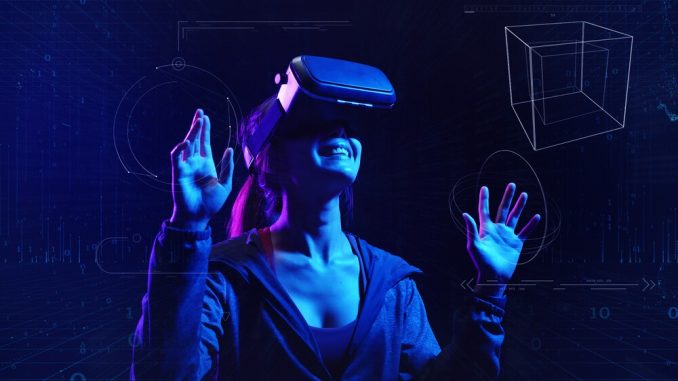
What is the Metaverse?
If you follow technology trends or spend a lot of time online gaming, you probably have come across the term “Metaverse”, which is spreading increasingly across the internet and boardrooms of leading companies.
So what is the Metaverse? Well it involves a shared virtual space where consumers are represented by virtual avatars, similar to a 3D version of Snapchat’s Bitmoji.
In a recent announcement by the CEO of Facebook, Mark Zuckerberg outlined his vision for the future of his social media behemoth, and the migration into the Metaverse along with rebranding Facebook as “Meta”. He initially debuted ‘Horizons Workrooms’, a virtual reality (VR) app that lets consumers socialise and hold meetings digitally by using a virtual avatar to represent themselves.
It is estimated that approximately 85 million users will have experienced AR or VR at least once a month in 2021 (Influencer Marketing Hub, 2021).
Along with the increasing number of users on the Metaverse, consumers seem to be quickly catching on with the keyword “metaverse”, yielding 166 million results on Google. Meanwhile, the hashtag #metaverse is widely used on Instagram, with more than 1.1 million posts on the platform and is tweeted over 1,800 times per hour on Twitter.
Source: Influencer Marketing Hub
So… how can digital marketers utilise the Metaverse in digital marketing?
Before we start, there are a couple of points to keep in mind:
- The Metaverse is always active and does not stop or end when you leave, it continues even when you are not connected.
- The Metaverse timeline synchronises with the real-world time. For example, if it is 19:00 at night, it will be the same time in the Metaverse.
Now those key points are out the way, let’s get to the good stuff.
A Mix of Metaverse and Real-Life Marketing
Source: OpenSea
One method of digital marketing is linking real-world experiences of your brand into the Metaverse. For example, Adidas released an NFT project for their fans in December 2021, which enabled the NFT holders to have exclusive access to Metaverse experiences and free collaborative merchandise throughout 2022.
Adidas’s NFT included a graphic hoodie and a co-branded adiColor Firebird tracksuit, in line with their iconic brand, which was a natural entry point and has been successful with their target audience.
Immersive Marketing
Immersive marketing is visual advertising within the Metaverse, e.g. as a ‘billboard’ style advertisement. You would be able to customise what each Metaverse user sees based on which demographic segment they fall under. E.g. Bidstack (a video game ad tech company) started advertising through in-game monetisation techniques such as the sponsorship boards which are on the perimeter of a football field and through sponsored billboards within the Metaverse.
Further experiences have proven to be successful too such as, Lil Nas X concert in Roblox, and the Gucci Garden experience visits.
Source: Bidstack
Understanding NFTs
Non-Fungible Tokens (NFTs) are a form of cryptocurrency on the Ethereum blockchain. The market for NFTs rose in 2020, leading more and more people trying to understand what NFTs are, so they can invest early enough. As NFTs are being regarded as the next big thing before they boom further in the decade.
Here’s an explanation video:
Making Collectibles Available
NFT lines can be presented and collected within the Metaverse. As a result, luxury brands such as Gucci have launched their own NFT line in collaboration with Roblox. This collaboration allows people to collect limited edition Gucci items in the Metaverse.
Source: Roblox
Continuously Experimenting
These are exciting times for digital marketers, as the Metaverse and NFTs have opened up potential for new experimental and creative forms of digital advertising. We just need to keep our eyes on this ever-expanding space, so we can keep up and maximise new opportunities to reach audiences.
Whilst the Metaverse is gaining prominence across worldwide markets, it is still a relatively new platform. Therefore, there is still plenty of room for experimentation and the best practices for marketing in the space are yet to be determined.
This video perfectly explains the Metaverse, and its progress throughout the years:
With games such as Fortnite, Minecraft and Roblox and other games all incorporating aspects of virtual (VR), augmented (AR) or mixed reality to provide an immersive gaming experience for users.
However, there is much more to the Metaverse than just gaming, socialising and advertising. A 2020 report from Consultancy PWC predicts that nearly 23.5 million jobs worldwide will use AR and VR by 2030. With the technology being used for tasks such as training, meetings and customer services. The Metaverse has the potential to impact and reshape the global economy far beyond what we can see right now.
Sources
The post How the Metaverse Can Be Utilised in Digital Marketing appeared first on Harvest Digital ™.

Leave a Reply